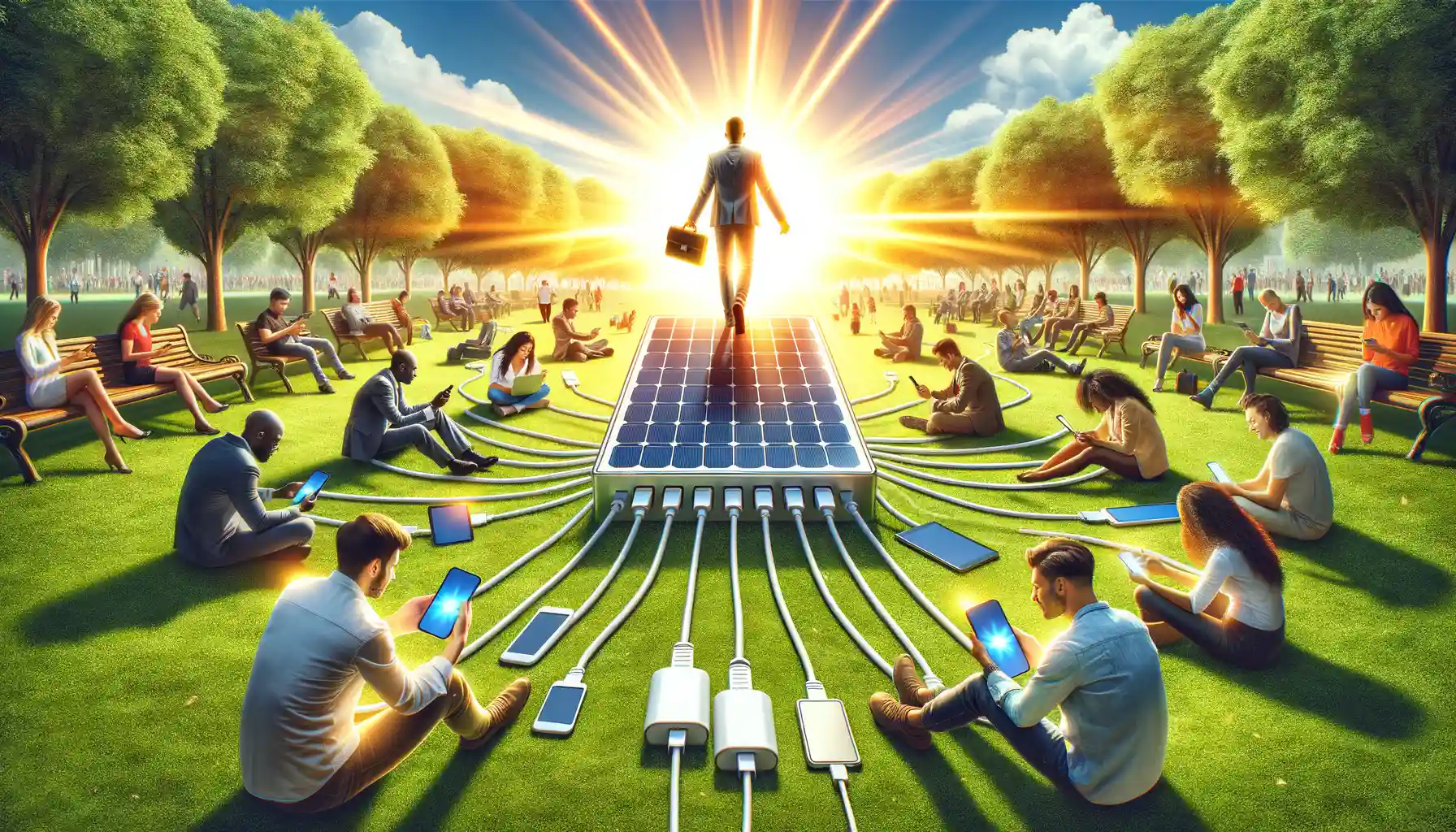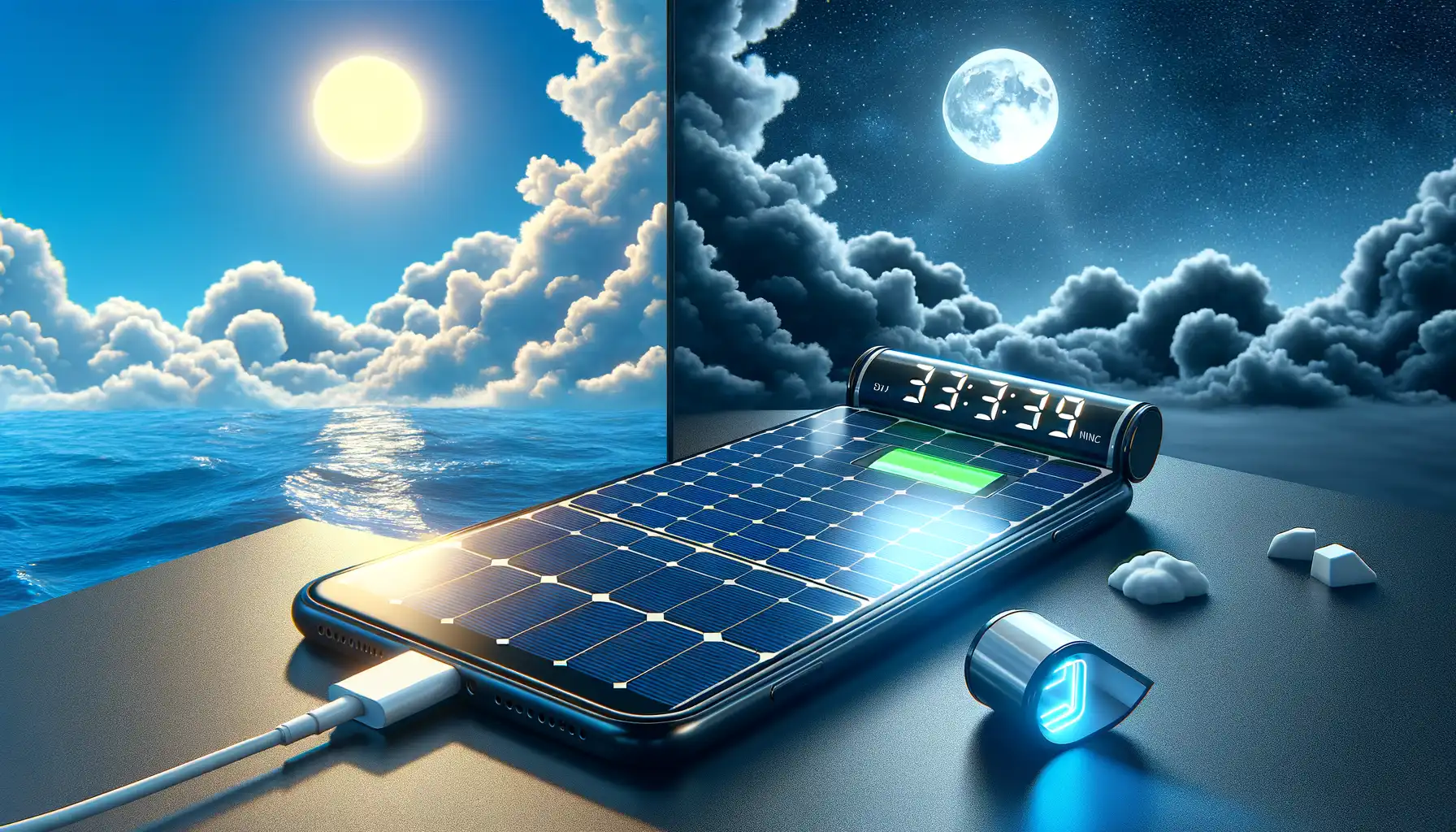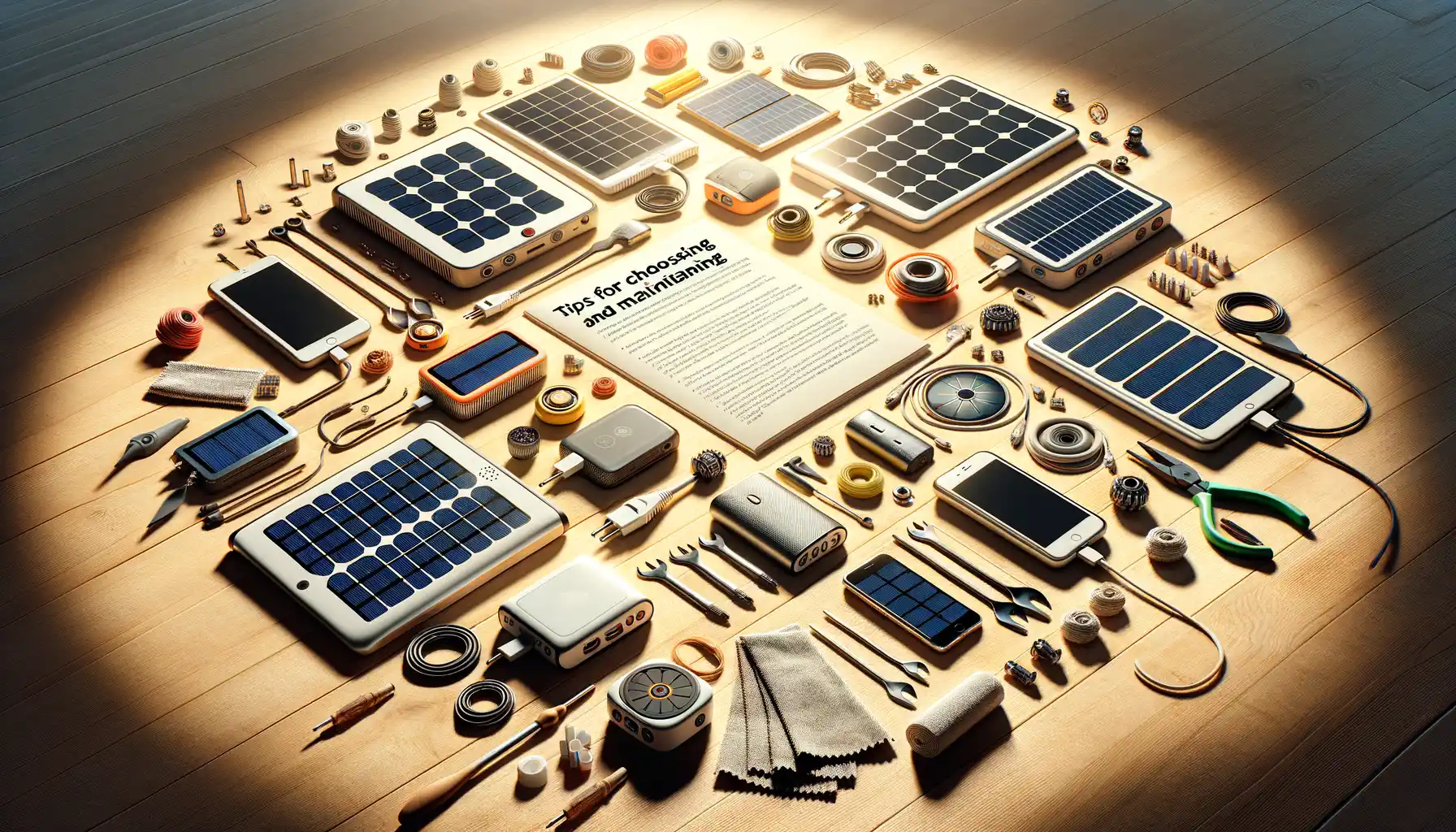Understanding Solar-powered Chargers
What Makes Solar-powered Chargers So Unique?
Imagine a charger that doesn’t demand an outlet, freeing you from the tether of wall sockets. That’s exactly what a solar-powered charger does. These shiny, futuristic gadgets turn everyday sunlight into a lifeline for your phone, tablet, or even camping lanterns. Whether you’re trekking remote trails or just enjoying an outdoor café, your energy source is right above you—pretty cool, right?
Solar chargers are more than just practical; they feel like tiny miracles in today’s hyper-connected world. They come in all shapes and sizes—some fold like origami for easy portability, while others are rugged enough for climbing expeditions. Here’s a quick breakdown of their components:
- Solar panels: The workhorses that capture sunlight and convert it into electricity.
- Battery storage: Many models store power for cloudy days or nighttime adventures.
- USB ports: Charging without limits!
The magic? It’s not just about saving energy—it’s about claiming your independence. Suddenly, nature isn’t just a backdrop; it’s your power source.
How Solar-power Technology Works in Chargers

Peeking Inside: The Magic Behind Solar Chargers
Imagine harnessing the sun’s energy and converting it into a lifeline for your devices—sounds like something out of a sci-fi movie, right? But it’s not. The secret lies in those sleek solar panels you see on these chargers. They’re packed with tiny, high-tech silicon cells called photovoltaic (PV) cells. These little overachievers absorb sunlight and transform it into direct current (DC) electricity. Pretty cool, huh?
But wait, your phone doesn’t run on DC—it needs a friendlier, alternating current (AC). That’s where the charger’s power conversion wizardry comes into play. A built-in inverter takes that raw DC energy from the sun and smooths it out into usable AC electricity. Ta-da! Now you’ve got a steady stream of juice for your gadgets.
The Step-by-Step Breakdown
It’s fascinating when you break it all down:
- Step 1: Solar panels bask in the sunlight, soaking up those rays.
- Step 2: PV cells convert sunshine into DC electricity—clean, silent, and infinite!
- Step 3: The inverter steps in, transforming DC into AC to suit your device’s needs.
- Step 4: Voilà! Your phone, tablet, or camera starts sipping solar-powered energy.
It’s almost poetic, isn’t it? The process mirrors how plants use photosynthesis, except instead of leaves, it’s panels… and rather than growing, you’re recharging!
Benefits of Using Solar-powered Chargers

Save Money and the Planet, One Charge at a Time
Imagine the sun, that fiery ball in the sky, not only lighting up your day but also fueling your devices. With a solar-powered charger, it’s entirely possible! One of the most rewarding benefits? No more dependence on wall outlets or hunting down power banks mid-adventure. These chargers embrace nature as your personal grid, turning sunlight into raw energy for your gadgets.
Beyond convenience, think about the money you save. Charging with solar energy is free—and repeatable! Say goodbye to climbing electricity bills caused by endlessly charging phones, tablets, and cameras. Plus, isn’t it satisfying to know you’re shrinking your carbon footprint just by keeping your battery full?
- Eco-friendly solution: You harness clean, renewable energy—zero emissions, zero guilt.
- Portability: Lightweight and compact, these chargers slip into backpacks or even jacket pockets.
- Energy independence: Perfect for camping, hiking, or emergencies when there’s no outlet in sight.
What makes these chargers even more amazing is their durability. Many are designed to handle rugged environments. Rain? Dust? No problem! You’re not just investing in technology—you’re investing in freedom.
Best Times and Conditions for Using Solar Chargers

When the Sun Smiles Brightest: The Ideal Conditions
Here’s the deal: solar chargers thrive on sunshine. They’re like little solar-powered superheroes, harnessing energy when the sun is at its peak. The sweet spot is typically between 10 a.m. and 4 p.m., when sunlight is most intense. Picture this: a sunny park with no shady trees or towering buildings casting sneaky shadows. That’s exactly what your charger needs to show off its true potential!
Heading out? Keep weather conditions in mind. A crystal-clear blue sky is every solar charger’s best friend. While they can still function under cloudy skies, efficiency dips nearly as fast as your enthusiasm during a rainy picnic. For the ultimate boost, position your charger to face the sun directly. Pro tip: if you’re uncertain about angles, picture how flowers turn their faces toward the light—your charger should do the same.
Making the Most of Your Adventures
Solar chargers shine brightest (pun intended) when you’re outdoors, embracing the wild. Think camping trips, beach days, or long hikes—all perfect opportunities to soak up those golden rays. But here’s the trick: plan ahead so you’re not stuck waiting for power when dusk hits. Time it right, and your devices will be charged long before night falls.
- Road trips: Dashboards offer great sun exposure if you’re driving all day.
- Backpacking: Strap your charger onto your backpack and let nature handle the rest!
- Fishing trips: While casting lines, set your charger up on the boat for some quiet recharging time.
Tips for Choosing and Maintaining Solar-powered Chargers

How to Pick the Solar Charger That’s Just Right for You
Choosing a solar-powered charger can feel like picking a travel buddy—it needs to match your lifestyle and keep up with your adventures. Start by asking yourself where you’ll use it most. Hiking remote trails? Opt for something lightweight and foldable like the solar panel mats that strap onto backpacks. Powering devices during long road trips? A sturdy model with a higher wattage might be better.
Consider your devices too! A small phone needs far less juice than a laptop or camera. Look for compatibility and charging speed—some chargers even come with multiple ports for all your gadgets. And don’t forget efficiency; a mix of high-efficiency panels (look for monocrystalline options) and built-in battery storage can save the day when the sun’s playing hide-and-seek.
- Bonus tip: Waterproof and dustproof chargers are lifesavers for outdoor enthusiasts.
- Pay attention to warranties—they speak volumes about the model’s durability.
Maintaining Your Solar Charger: A Little Love Goes a Long Way
A solar charger isn’t just a tool; it’s an investment in convenience and sustainability. To keep yours in top shape, give it some TLC. Dust is its kryptonite—wipe the panels clean regularly with a soft, damp cloth for maximum sunlight absorption. If you’ve taken it on a sandy beach getaway (jealous!), double-check for grit in the crevices.
Store it properly too. Folding models should be stored flat to avoid bending the panels, while rigid ones need a scratch-free zone. Avoid leaving it outdoors overnight; moisture and temperature swings aren’t its best friends. Also, periodically check the cables and ports for wear and tear—these details matter!
Pro tip: Test your charger every couple of months, even if you’re not using it. Like muscles, it works best when it stays active.
